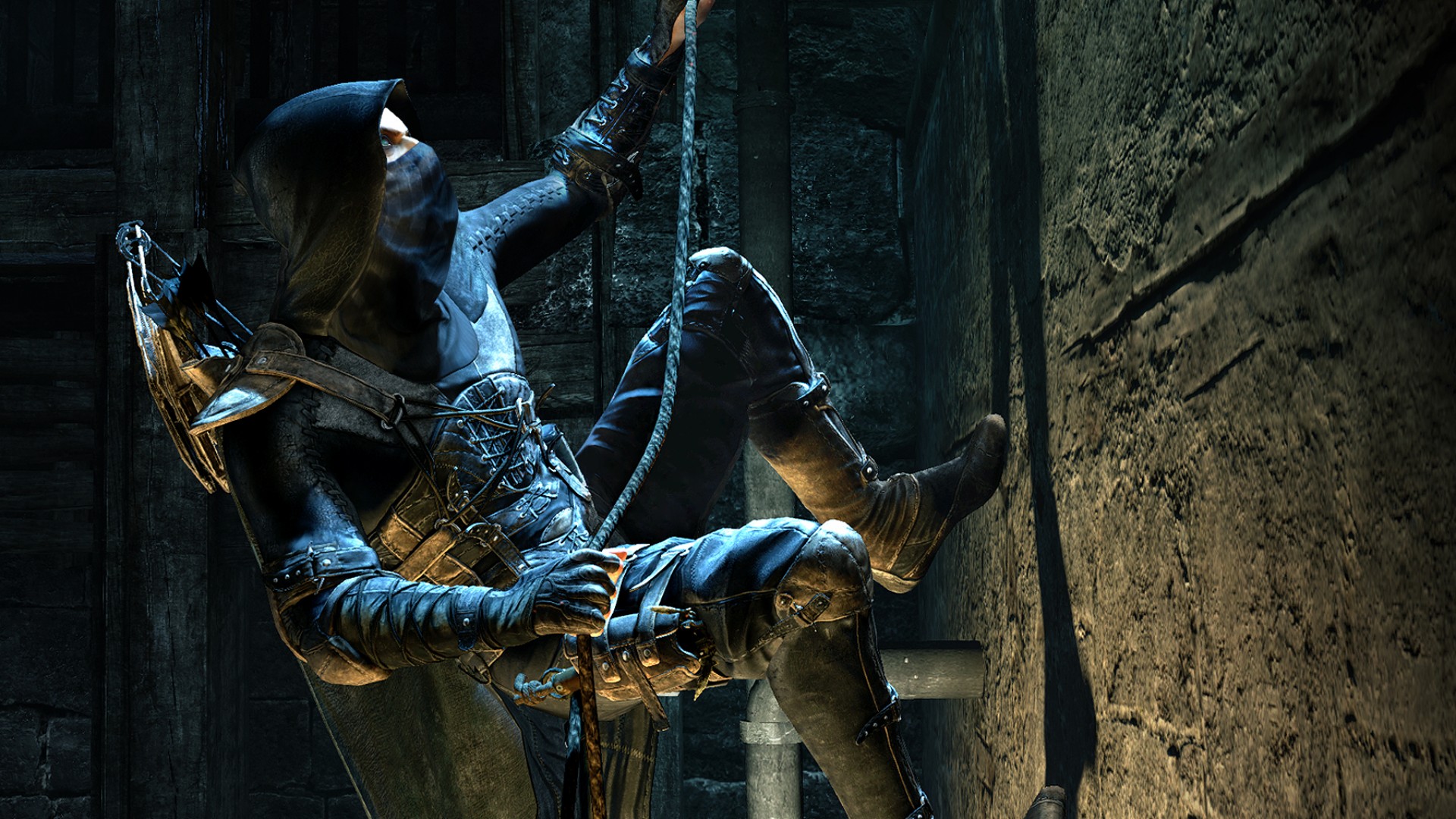Oh, no. I’m feeling a little game journalist’s remorse on this one. What was so important, a decade ago, that I couldn’t get behind a flawed but fundamentally faithful Thief game? What might have happened if I’d dedicated all my energies to pumping the bellows in the direction of its lukewarm response at launch, persuading peers and punters to give Eidos Montreal’s stealth sequel a fair shake? Maybe we wouldn’t have waited til now for the whiff of a follow-up, in the form of VR spin-off Legacy of Shadow.
As ever, context is everything. 2014 was stuffed full of treats. It was the year of Titanfall, Wolfenstein: New Order and Alien: Isolation. In the summer I stayed up all night trading arrows in Divinity: Original Sin, overslept, and blamed my absence at work on dodgy wi-fi. We were busy, with unambiguously deserving games.

Eidos Montreal’s Thief, meanwhile, had a number of factors working against it. Arriving at a time when stealth games were beginning to look too niche for swelling triple-A budgets, it awkwardly bounced between meditative burglary and moments of cinematic bombast that could fill trailers. Ubisoft’s last-ever Splinter Cell, released the previous year, was similarly sold with shootouts and explosions.
Meanwhile, triple-A developers were wrestling with the implications of full-body performance capture, a shift that disproportionately affected beloved stealth action stars. Sam Fisher’s gravelly grandpa, Michael Ironside, was bumped for a more physically-able younger actor—while the original Garrett, Stephen Russell, was swapped out for Romano Orzari, a veteran of Assassin’s Creed who could do his own stunts.
“We ultimately realised that holding onto Stephen as the voice of Garrett just for the sake of our nostalgia would be like wanting to cast Sean Connery again in the new 007 movies,” narrative director Steven Gallagher said at the time. Fans apparently disagreed. Notably, both Ironside and Russell have since returned to the roles they originated.
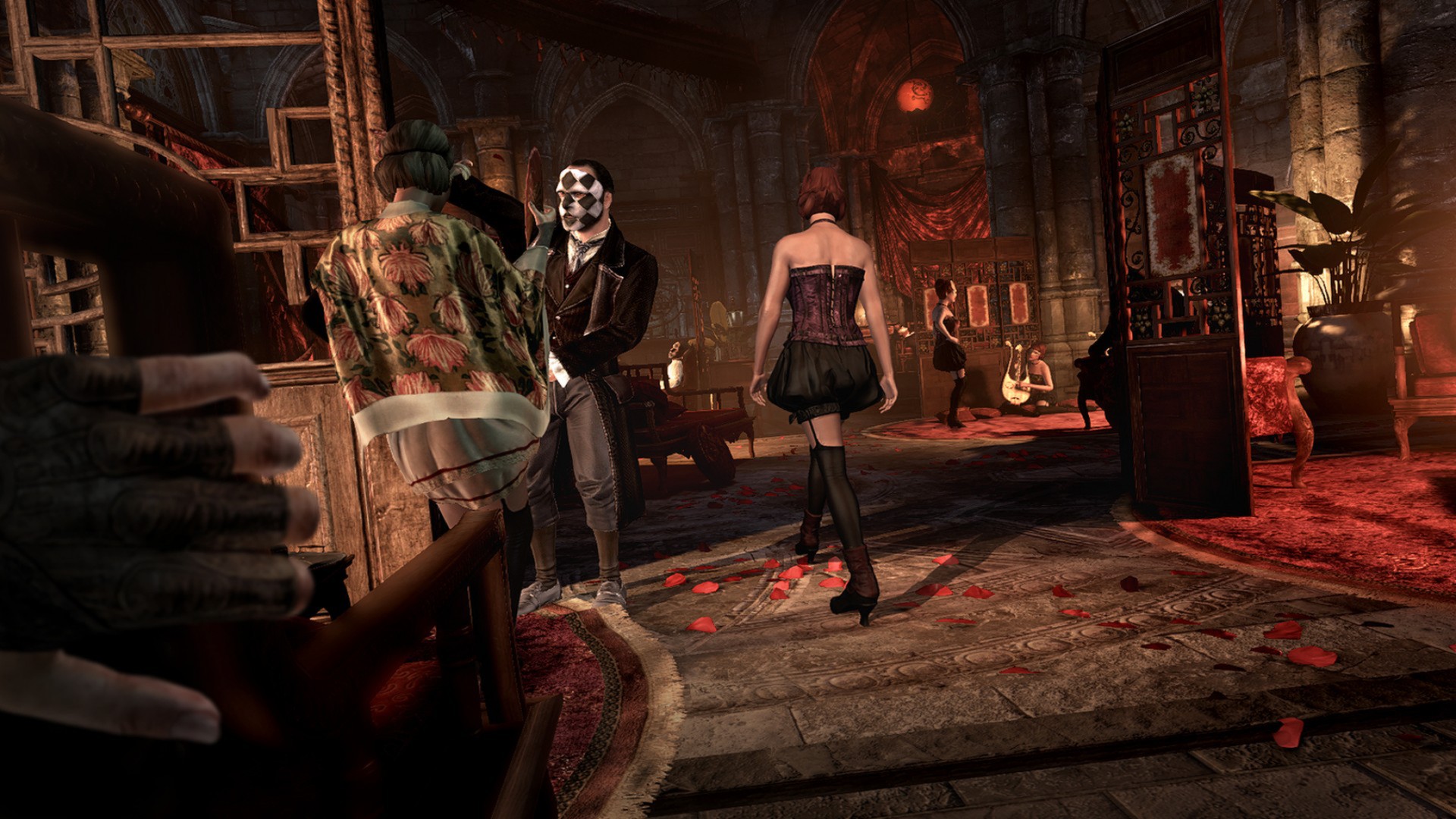
To make matters worse, Thief’s production was marked by staff turnover and design changes. It’s hard to know whether the creative chaos was any more pronounced than is normal for triple-A development. But unusually for the time, all of these stories wound up in the press, creating a mood of impending doom.
Then there was Dishonored, a spiritual successor to Thief released a year and a half earlier to critical acclaim and millions in sales. Comparisons were inevitable, but Eidos Montreal didn’t help itself in this regard. Its Thief game opens on a bridge stacked with houses, which can’t hold even a snuffed candle to Kaldwin’s crossing in Dunwall. An early centrepiece mission is staged at a brothel, which unlike The Golden Cat, cannot be entered by possessing a fish and slipping through a grate. The story is even set against the backdrop of a plague, which finds the ruling class stealing property from the dead. Yet Thief can’t match the devastation of Dunwall for emotional heft, nor Dishonored’s commentary on the corrupting influence of power. Competing directly with an Arkane firing on all cylinders was unwise in the extreme.
Yet today, the context is very different. The frontline of immersive sim development has shifted to the indie scene. Deus Ex is dead, and Eidos Montreal is backup dancer for Grounded 2. Thief’s strengths, as the last of the proper big-budget stealth sequels, have become far easier to appreciate.
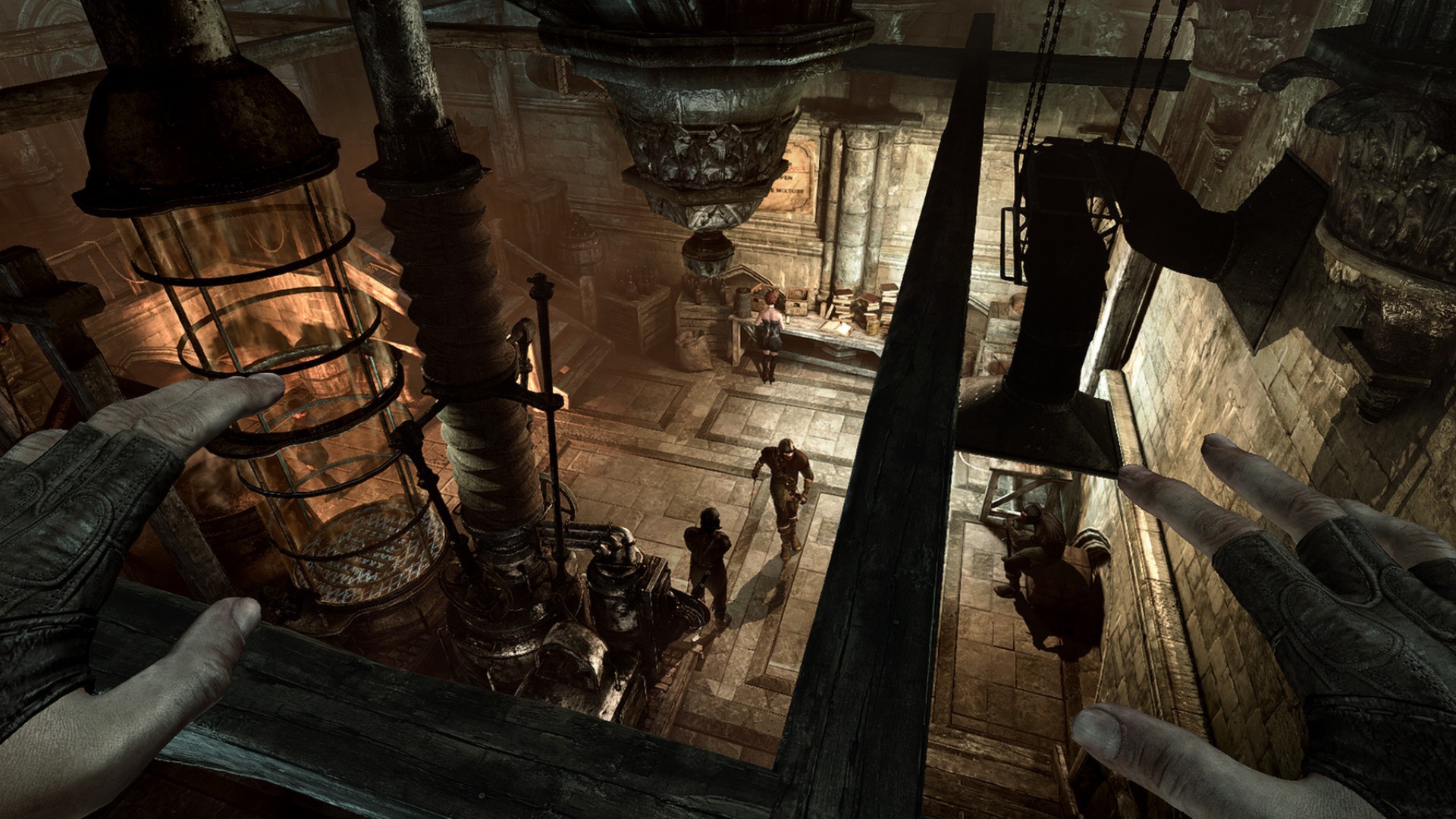
This is a game that deserves credit for restoring the joy of motion to Thief. 2004’s Deadly Shadows, for all its fine qualities, had introduced a new clumsiness to the series in its rush to integrate a third-person camera. But Eidos Montreal gave Garrett a lunging, birdlike athleticism, pilfered from both Mirror’s Edge and Assassin’s Creed. It sacrificed a traditional jump key for a contextual ‘freerun’ trigger, which turned out to be the right call. It was never fun to mess up a ghost run in Thief II because you’d mucked up a bit of platforming and plunged into the path of a Mechanist combat bot.
Eidos Montreal’s other new contribution to the Thief moveset—a discreet roll dubbed the ‘swoop’—is very welcome too. It’s a classic bit of first-person ballet, in that it would look absurd from any other perspective, but soon becomes second nature when darting forward to relieve a guard of their purse. Garrett is a living reminder not to carry your phone in your back pocket.
Rarely are you given a long straight on which to stretch your legs, however. The arteries of The City are clogged with collapsed carts and closed gates, and the most direct route to your destination is often a bypass that takes you via two rooftops, a gutter, and the bedroom window of what might generously be termed a studio apartment. Getting around is a constant negotiation—something that reviewers bumped up against, but which I’ve come to appreciate as a genuinely unique spatial Rubik’s Cube. Here, navigational knowledge is hard-earned, and to some degree that feels right. If the Thieves’ Highway was easily accessible, everyone would be using it.
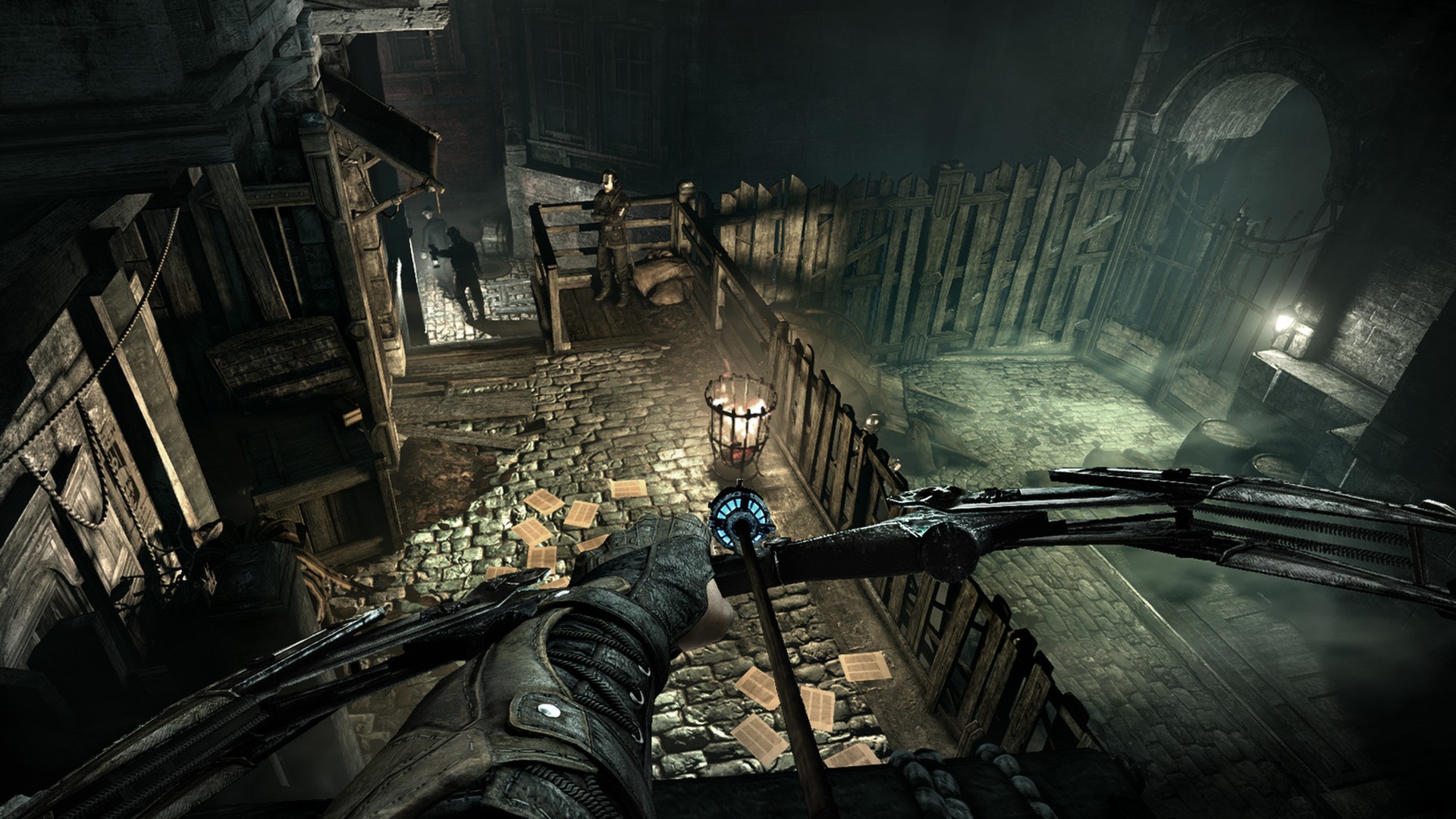
Some of the old turn-offs are still bothersome, of course. There’s the lady in the alley behind the Crippled Burrick, whose voice lines were clearly intended as a rallying cry to be delivered in front of a crowd—but are instead yelled directly into the face of some poor taffer presumably covered in spittle. There’s the seller who supplies you with water arrows, but is animated like the Artful Dodger, with an incongruous theatricality and a bottom lip that wobbles as if it’s about to fall off. There are the windows that are really loading screens, and really quite frequent. The scars of Thief’s development are as visible as Garrett’s missing eye.
But there are other hang-ups I’ve simply got over. Does it matter that the game switches to third-person for brief bouts of Uncharted-style pipe-climbing, or for the odd choreographed cutscene? If it’s good enough for Indiana Jones and the Great Circle, the best immersive sim ever made by people who refuse the genre classification, it’s good enough for me.
While Thief’s main missions occasionally devolve into embarrassing fits of Michael Bay, Eidos Montreal do in fact get what Garrett is all about. Much like Geralt, he’s a reluctant shaper of the world around him. An aloof freelancer who talks plenty about getting paid—but whose position as a voyeur on the edge of society makes him a better arbiter of right and wrong than those in the thick of administration or revolution. “It’s not about the payment,” he ultimately admits to his fence, Basso. “It’s who I am.” New actor Orzari even retains Russell’s trademark delivery, which splits the difference between film noir detective and a mumbling breeze, finding its way through the gaps in a windowframe.
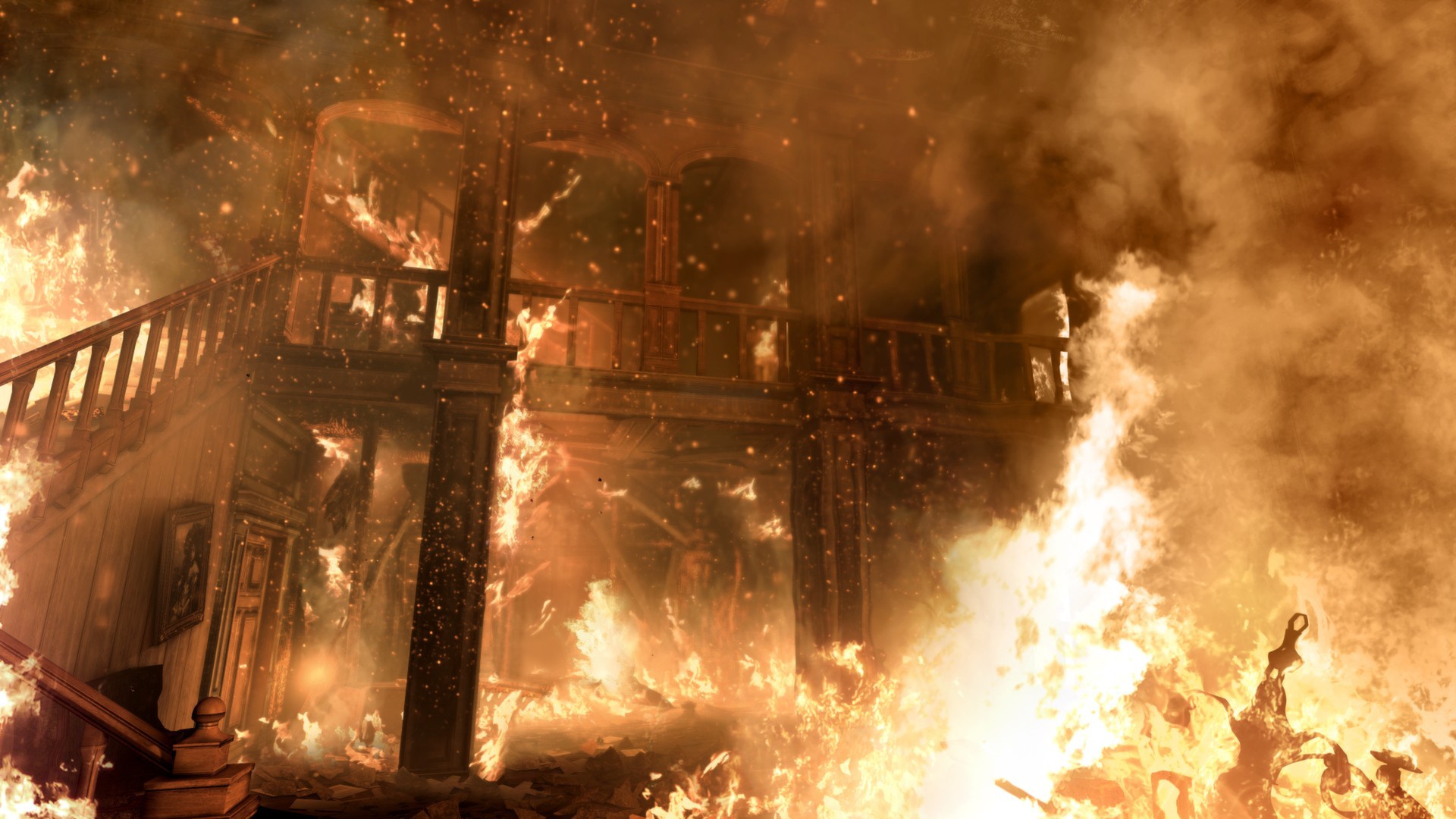
This Thief reboot is not even really a reboot, but a direct continuation in disguise. The factions of Hammerites and Pagans that Ken Levine once conceived may be absent on the surface, and Garrett is sparing in referencing his own history (“It better be the Trickster’s own gold teeth inside a jar in this thing,” he murmurs before cracking a gigantic safe). But it doesn’t take long before you’re exploring a subterranean library covered in the iconography of the Keepers, the order of monkish scholars that once acted as The City’s MI5. The lore of Thief has long been intriguingly hazy, and it feels oddly fitting that a place like this could forget its own history—the records lost in the aftermath of yet another great fire or epidemic.
Eidos Montreal even picked up threads from Deadly Shadows, which ended with Garrett catching a young girl in the act of attempting to pickpocket him. The scene was an echo of Garrett’s own origin story, and implied that a new thief would be wearing his cowl in a sequel. Sure enough, in Thief 2014, Garrett has a young, estranged apprentice named Erin—cheated out of her rightful role as protagonist, but present at the centre of the plot as a talking macguffin. Our hero is even holed up in a familiar hideout—the Stonemarket clocktower, covered in scaffolding after our hero brought it low in a previous installment. Sure, the layout and architecture of The City has changed, but that’s nothing new. If anything, it’s tradition.
VR might be a sideshow, but if it leads to another proper Thief game in a landscape without Dishonored, that would be a happy prospect indeed. Back in 2014, Eidos Montreal’s Thief felt like a dead end. But if this game teaches anything, it’s that a wall is simply a prompt to look high and low and find another way forward.
